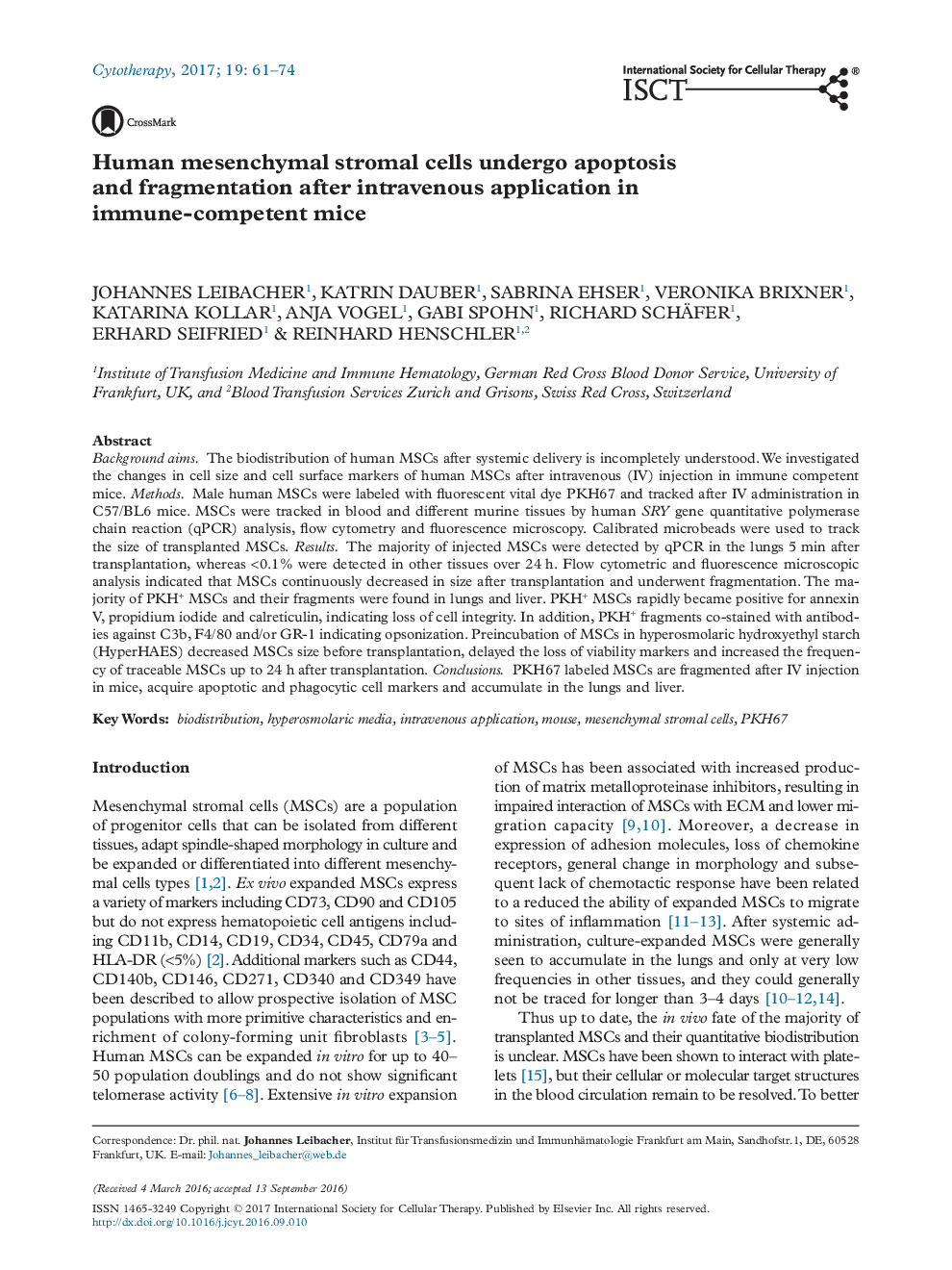| Article ID | Journal | Published Year | Pages | File Type |
|---|---|---|---|---|
| 5531278 | Cytotherapy | 2017 | 14 Pages |
Background aimsThe biodistribution of human MSCs after systemic delivery is incompletely understood. We investigated the changes in cell size and cell surface markers of human MSCs after intravenous (IV) injection in immune competent mice.MethodsMale human MSCs were labeled with fluorescent vital dye PKH67 and tracked after IV administration in C57/BL6 mice. MSCs were tracked in blood and different murine tissues by human SRY gene quantitative polymerase chain reaction (qPCR) analysis, flow cytometry and fluorescence microscopy. Calibrated microbeads were used to track the size of transplanted MSCs.ResultsThe majority of injected MSCs were detected by qPCR in the lungs 5âmin after transplantation, whereas <0.1% were detected in other tissues over 24âh. Flow cytometric and fluorescence microscopic analysis indicated that MSCs continuously decreased in size after transplantation and underwent fragmentation. The majority of PKH+ MSCs and their fragments were found in lungs and liver. PKH+ MSCs rapidly became positive for annexin V, propidium iodide and calreticulin, indicating loss of cell integrity. In addition, PKH+ fragments co-stained with antibodies against C3b, F4/80 and/or GR-1 indicating opsonization. Preincubation of MSCs in hyperosmolaric hydroxyethyl starch (HyperHAES) decreased MSCs size before transplantation, delayed the loss of viability markers and increased the frequency of traceable MSCs up to 24âh after transplantation.ConclusionsPKH67 labeled MSCs are fragmented after IV injection in mice, acquire apoptotic and phagocytic cell markers and accumulate in the lungs and liver.
